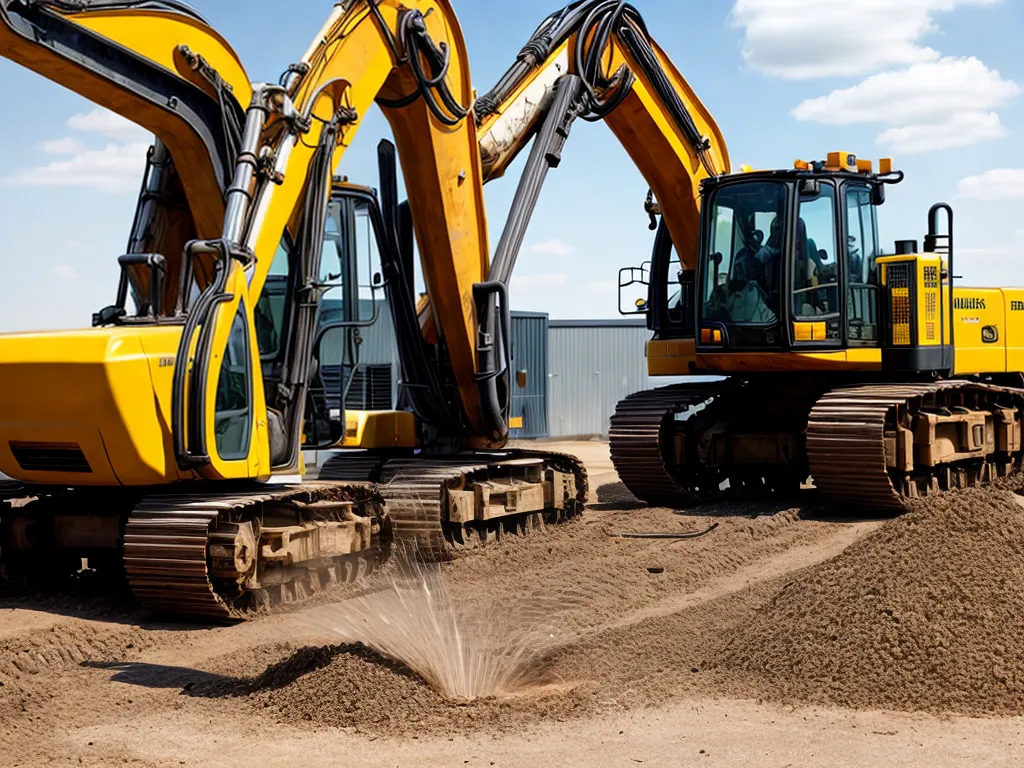
Check Valid Grounding Methods for Industrial Equipment
Introduction
Grounding is a critical component of any electrical system, but especially for industrial equipment where safety and proper functioning are paramount. As the owner and operator of industrial facilities, I need to ensure we are using valid grounding methods to protect our workers, equipment, and operations. In this article, I will provide an in-depth look at various grounding methods and how to check that they are correctly implemented for maximum efficacy.
Purpose of Grounding Industrial Equipment
Grounding serves several key purposes:
-
Worker Safety - Properly grounded equipment protects workers from electric shock. By providing a path for electricity to safely dissipate into the earth, grounding prevents potential differences which could electrocute personnel. This is the primary reason for grounding industrial equipment.
-
Equipment Protection - Grounding protects connected equipment from damage due to transient overvoltages from lightning strikes, utility grid switching, and internal faults. The grounding system provides a low impedance path to dissipate such potentially damaging currents.
-
Noise Reduction - Grounding can reduce electrical noise in circuits and shield sensitive devices from electromagnetic interference (EMI).
-
Spark Hazard Reduction - In hazardous areas with flammable materials, grounding reduces the possibility of sparks igniting vapors. It equalizes potential between conductive equipment to prevent static discharge.
Proper grounding is crucial for the safe and reliable functionality of electrical systems, especially those powering and controlling industrial processes. Regular inspection and testing verifies grounding methods remain intact.
Key Elements of an Industrial Grounding System
Grounding systems have several main components:
Grounding Electrode
This is the conductive path which connects equipment to earth ground. Common examples include:
-
Metal water pipe - Cold water pipes make excellent grounding electrodes where available, as they have good conductivity and run underground. They should be supplemented with other electrodes.
-
Ground rod - Copper or galvanized steel rods driven into the earth. They are the most common dedicated grounding electrode. I typically install multiple rods spaced 6-8 feet apart for redundancy.
-
Concrete-encased electrode - A conductive wire or rebar network cast inside a concrete foundation or footing. The concrete keeps the electrode below grade.
-
Ground ring - A buried conductor loop around the perimeter of a building or structure. Used where soil has poor conductivity.
-
Grounding grids - A mesh of conductors buried below earth's surface - provides a larger contact area for better conductivity.
Grounding Electrode Conductor
The cable connecting equipment grounding points to the grounding electrode. This ties the system together. It is typically solid or stranded copper for reliability and corrosion resistance.
Equipment Grounding Conductor
Smaller gauge insulated wire, whether green or bare, running from the ground bus within equipment to any metallic enclosures. Grounds the chassis to protect the device.
Ground Bus Bar
Common point where ground conductors and branch circuit equipment grounding wires terminate. Usually a solid copper bar within the electrical service panel or enclosure. Allows multiple connections.
Inspecting and Testing Grounding Integrity
Verifying my industrial grounding systems are properly installed and functioning is essential. Here are key checks I perform:
Visual Inspection
-
Check for physical damage to ground electrodes and conductors - exposed wire, broken rods, loose connections that can increase resistance.
-
Verify all grounding system components are adequately bonded together. Look for signs of corrosion which can impede current flow.
-
Confirm all equipment enclosures, frames, and non-current carrying metal parts are grounded via equipment grounding conductors.
Clamp Meter
- Clamp grounding electrode and equipment grounding conductors to measure current flow. Minor current indicates an effective ground path. No current could signal an open connection.
Continuity Testing
- Use a multimeter to check for continuous metal-to-metal connections between system components. There should be no more than 1 ohm resistance.
Ground Resistance Testing
-
Use earth ground resistance tester to measure resistance to true earth ground. Look for values below 5 ohms in most cases, and below 1 ohm for sensitive equipment. High resistance means inadequate grounding.
-
Testing ground rod resistance - disconnect at the bus bar and measure between rod and grounding stake.
-
Testing ground loop/ring resistance - need two test stakes, measure total system resistance.
Regular inspection and testing provides ongoing verification of proper grounding performance. I keep logs of measured values to identify any upward trends that could indicate ground faults developing.
Summary
As I operate industrial facilities, valid equipment grounding is a top priority for protecting my personnel, equipment investments, and continuity of operations. This requires installing appropriate grounding system components and periodically verifying their integrity through visual, electrical, and resistance testing checks. Ongoing maintenance ensures my grounding remains effective as the first line of defense against electrical hazards. Robust grounding provides the foundation for reliable and safe power distribution across my facilities.